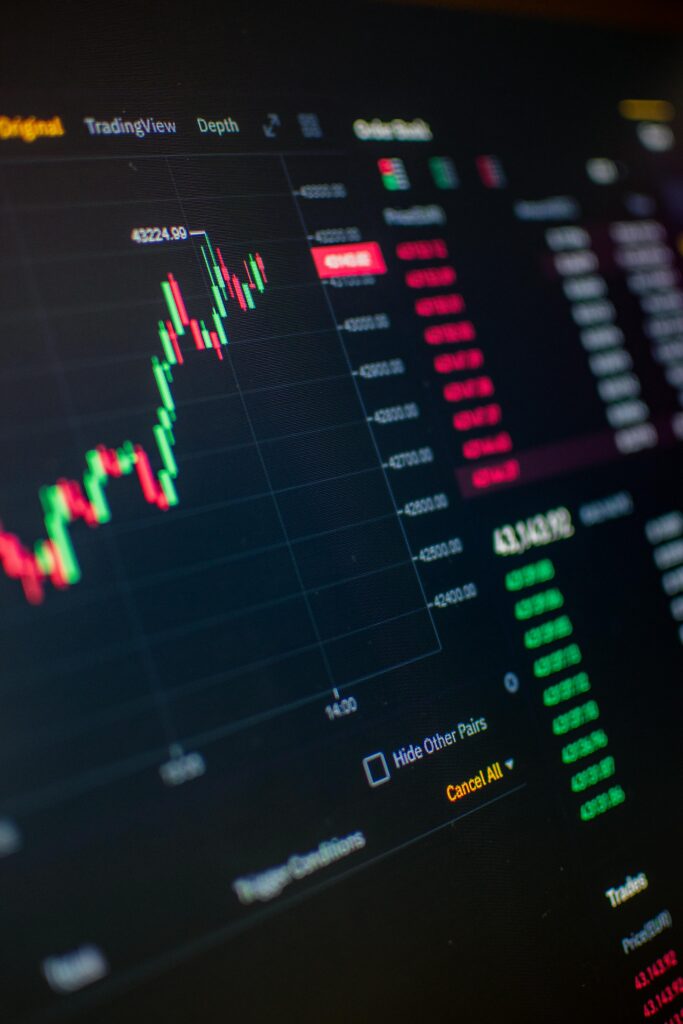What is
Algorithmic Trading?
Algorithmic trading refers to the use of computer algorithms or automated systems to execute financial market trades at high speeds and in large volumes, following a predefined set of rules and strategies. These algorithms can analyze vast amounts of market data and make decisions to buy or sell assets based on factors such as price, volume, timing, and other market conditions, without human intervention.
How Algorithmic Trading Works ?
Algorithmic trading works by automating complex strategies, allowing for faster and more efficient execution of trades with minimal human intervention, ensuring precise execution according to defined rules.
01
Define the Trading Strategy
The first step is to determine the trading strategy based on the desired outcome. This could involve trend-following, arbitrage, or other methods. The strategy will include conditions like price movements, timing, volume, and risk factors.
02
Algorithm Development
A computer algorithm is developed to automate the execution of the trading strategy. This involves writing code to define the rules and conditions for buying and selling assets. The algorithm is programmed to monitor the market, analyze data, and make decisions based on the predefined rules.
03
Backtesting
Once the algorithm is created, it is tested against historical market data to evaluate how it would have performed in the past. This process, known as backtesting, helps ensure the strategy is effective before it is used in live trading.
04
Optimization
After backtesting, the algorithm may be fine-tuned to improve performance. This could involve adjusting parameters like trade size, entry and exit points, and risk management features to maximize profits or minimize losses.
05
Execution
Once the algorithm is optimized, it is deployed for live trading. The algorithm continuously monitors the market for signals and executes trades automatically when the conditions specified in the strategy are met.
06
Order Routing and Market Interaction
The algorithm sends trade orders to the exchange or market. It can place orders on multiple venues simultaneously and may use strategies like market making or limit orders to execute trades at optimal prices.
07
Monitoring and Adjustments
The algorithm operates autonomously but is continuously monitored to ensure it functions correctly in real-time market conditions. If needed, adjustments can be made to the strategy or algorithm based on changing market conditions.
08
Execution Completion
The algorithm completes the trade according to the set rules and closes positions once the goals of the strategy have been met (e.g., target profit, stop-loss condition).
09
Post-Trade Analysis
After the trades are executed, the results are analyzed to evaluate the algorithm’s performance. If necessary, further refinements can be made to improve the strategy for future trades.
Benefits of Automated Trading
Kidon Consultancy offers expert automated trading solutions, utilizing advanced algorithms to execute trades swiftly and efficiently, maximizing returns while minimizing risks in dynamic market conditions.
Speed
Automated trading executes trades within milliseconds, enabling quick responses to market opportunities.
Accuracy
Algorithms follow predefined strategies without deviation, ensuring precise order execution.
Best Execution
Automated systems find the best possible price for executing orders, minimizing slippage.

Low Latency
The system processes and executes orders with minimal delay, reducing the time between decision and execution.
No Human Error
Automation eliminates mistakes caused by emotional decisions or manual errors in trading.
Backtesting
Historical data is used to test and refine strategies, ensuring they are effective before live trading.
